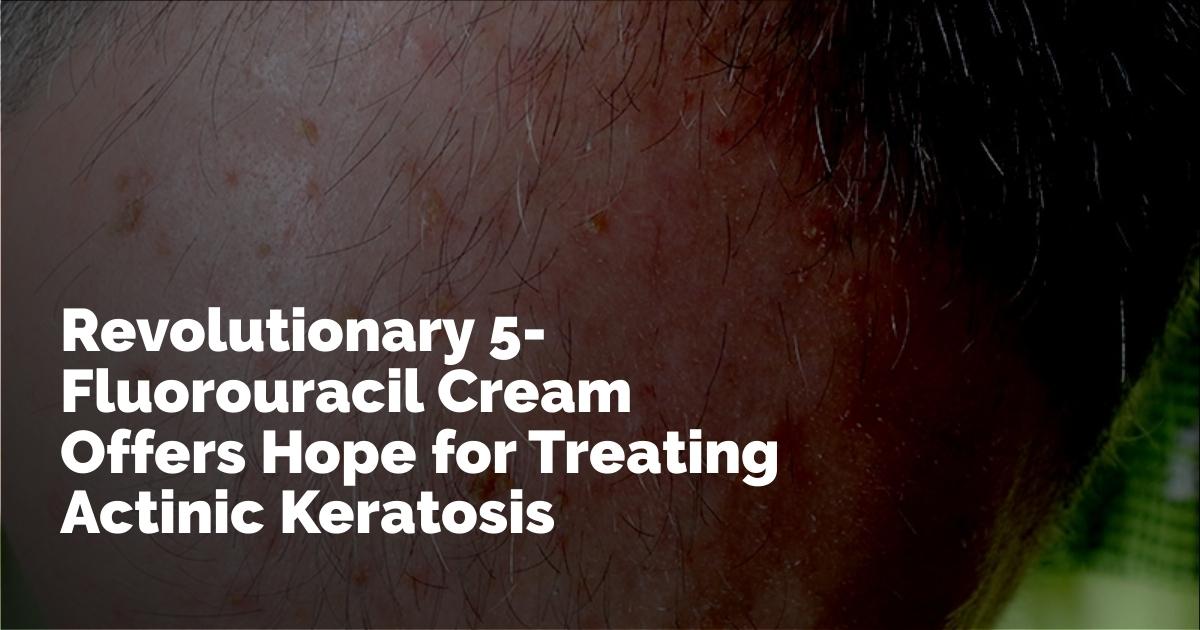Advancements in the Treatment of Hyperkeratotic Actinic Keratosis: 5-Fluorouracil 4% Cream
In recent developments within dermatological treatments, 5-fluorouracil 4% cream has emerged as a promising option for managing hyperkeratotic actinic keratosis (AK) lesions. This ointment has shown significant efficacy in recent studies, with total and partial clearance rates that position it as a compelling candidate for enhancing current therapeutic strategies for treating AK.
Understanding the Study and Its Results
A retrospective, single-centre study serves as the basis for these findings. Conducted between September 2024 and March 2025, this study involved 19 adult patients with a median age of 80. These participants were selected based on visible, discrete, and indolent hyperkeratotic AK lesions located on either the face or scalp. Each patient underwent a treatment regimen involving the daily application of 5-fluorouracil 4% cream over a period of 28 consecutive days.
The core aim of the study was to assess the cream's efficacy by measuring the percentage of lesions that achieved clinical complete clearance, defined as 100% lesion resolution at the three-month follow-up. Partial clearance was another critical outcome, defined by at least a 75% reduction in both the size and thickness of lesions.
66 lesions were evaluated, with 38 found on the face and 28 on the scalp. The results were promising; complete clearance was observed in 54.5% of the lesions, while partial clearance was noted in 24.2%. Notably, lesions on the face responded more favorably, achieving a complete clearance rate of 74% compared to 29% on the scalp, a statistically significant difference.
Evaluating Safety and Tolerability
The study also thoroughly investigated the safety profile and tolerability of 5-fluorouracil 4% cream. Local skin reactions were systematically assessed at the fourth week of treatment using a semiquantitative scale ranging from 0 to 3. These reactions included erythema, scaling, edema, crusting, erosions, stinging, and pruritus.
Most reactions were mild (51.4%) to moderate (47.2%), with only a small percentage (2.7%) classified as severe. Despite the high incidence of erythema (89.4%) and stinging (73.6%), no patients discontinued treatment due to adverse effects, underscoring the cream's favorable safety and tolerability profile.
Potential Implications for Clinical Practice
The promising outcomes of this study add substantial weight to the growing body of evidence supporting the effectiveness of 5-fluorouracil 4% cream in managing AKs. While the data on its efficacy for hyperkeratotic lesions is still emerging, these initial results suggest the cream could play a significant role in ameliorating the limited treatment options currently available for hyperkeratotic AKs.
This study was spearheaded by Federica Li Pomi from the Department of Precision Medicine in Medical, Surgical, and Critical Care at the University of Palermo in Italy, and the findings were disseminated online on August 16, 2025, in the journal Dermatology and Therapy.
Study Limitations and Considerations
Despite its encouraging findings, the study did have limitations. A control group was not included, preventing direct comparison with other treatment modalities. The sample size was small, limiting the statistical power of the results, and the short follow-up period did not allow for evaluation of the treatment's long-term efficacy or recurrence rates. Furthermore, the absence of histopathologic confirmation of lesion clearance might have led to an overestimation of treatment success.
Concluding Thoughts
In summary, the study underscores the potential of 5-fluorouracil 4% cream as a valuable addition to the treatment landscape for hyperkeratotic actinic keratosis. While more research is needed to confirm these findings and expand the understanding of its long-term benefits, this treatment provides a beacon of hope for improving therapeutic options in dermatology. Continued exploration and trials will be integral to fully establishing the role of this cream in clinical practice, highlighting the need for larger, controlled studies with extended follow-up periods to validate these promising outcomes.
출처 : Original Source

